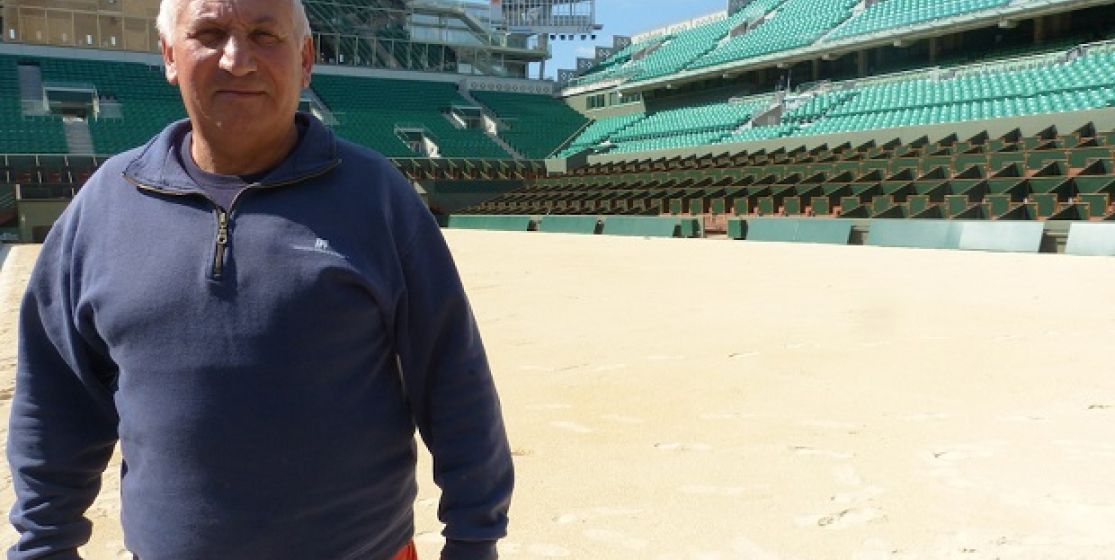A few days before the beginning of Roland Garros, everyone is busy preparing the courts. In charge of maintaining the Parisian’s clay courts, Gerard Tiquet answered our behind the scenes true or false regarding this crucial step for the French Open.
1/ The Philippe-Chatrier is the last one to be prepared
=> TRUE
"The players who prepare the qualifications come to take their bearings on the outside courts, not the bigger ones. So, the main courts are prepared last and not too early, to prevent them from staying too long without being played. Most of the time, we start preparing the courts early April, when the weather conditions are favourable. This year, we started preparing the Suzanne Lenglen and the Philippe Chatrier courts on the 5th of May, knowing that the bookings of the two courts start on the 19th of May. Seeded players such as Novak Djokovic are going to want to train on the Chatrier or Lenglen because they know that they will play there during the fortnight."
2/ It takes more time to prepare the Philippe-Chatrier court than the outside courts
=> TRUE
« The Philippe Chatrier is much bigger than the outside courts: it’s 70-feet wide instead of 60 and 140-feet long instead of 120, so it’s true that it takes us about an hour and a half more to roll it. That said, the outlines are the same and the preparation of the central requires as many people than an outside court: a dozen people.»
3/ During a day, the court has to be watered between each match
=> TRUE
«We're sometimes asked to water the courts between sets but we have less time to bring in the water than between matches. So, watering is more effective at the end of a match. When a match lasts a little longer than expected, we are delayed. So, we also have to delay the following game of three or four minutes, especially if the weather is hot and the courts need more water, for the comfort of players and to make sure that the clay doesn’t fly away. When a match is long, tight and the weather very hot, we come to water the court, in agreement with the supervisor and the chair umpire. Sometimes players asked us to do it as well. Rafael Nadal never asks for anything, but players whose clay is not the favourite surface, as Andy Murray, can make this request. Sometimes players request a watering because they are losing. It can be an excuse for them to rest or to think about their tactics!»
4/ The courts’ preparations start early every day
=> TRUE and FALSE
« We water the courts in the morning, before the start of trainings, but the materials don't have enough time to store the water and therefore it evaporates quickly when the sun gets warmer. So, we prefer watering the courts thoroughly the previous day with a hose for 25 minutes. During the night, temperatures drop, so the water can go down into the cinder's layer. Then the next day we only have to add water in the morning and between matches. »
5/ Roland-Garros’ courts are made of four layers
=> TRUE
« On the bottom, there’s a first layer made gravel which is about 10-inch thick and helps the stabilization of the court and the drainage. Just above, there's a 4-inch layer of cinder, which retain the water and give flexibility to the court. Then a 3-inch layer of compacted limestone used as the basis of the court. Finally, on the surface, a thin layer of gravel to give the courts its colour and the glide. The red colour helps prevent the players to be dazzled. It is indeed easier to play on a red surface than on a white one.»
6/ The preparation of clays courts can have an influence on the game
=> FALSE
« When we prepare a court, we use a 100 stones roller on the limestone's layer. The more the court is compacted by this roller, the faster it will be. But we use the same materials for all the courts and what will really affect the speed of the surface is the weather. When it’s hot, the court is fast, while on a cloudy day, it will be slower because water tends to slow down the game.»
7/ In case of rain, the person in charge of the courts’ maintenance decides alone to cover up the court.
=> FALSE
« We intervene in covering the courts but we're not in charge. If we feel that the weather is becoming bad, we may ask to stop the match, but we must go through the supervisor who will then liaise with the umpire and the linesmen. The umpire will then give his opinion, according to the progress of the game, because you cannot stop a game at any given time. The umpires don't all have a great knowledge of clay courts: an English referee will be more familiar with grass, an American will have more experience with indoor courts. In France, French referees are used to the characteristics of clay courts and it’s easier to advise them to stop the match.»






